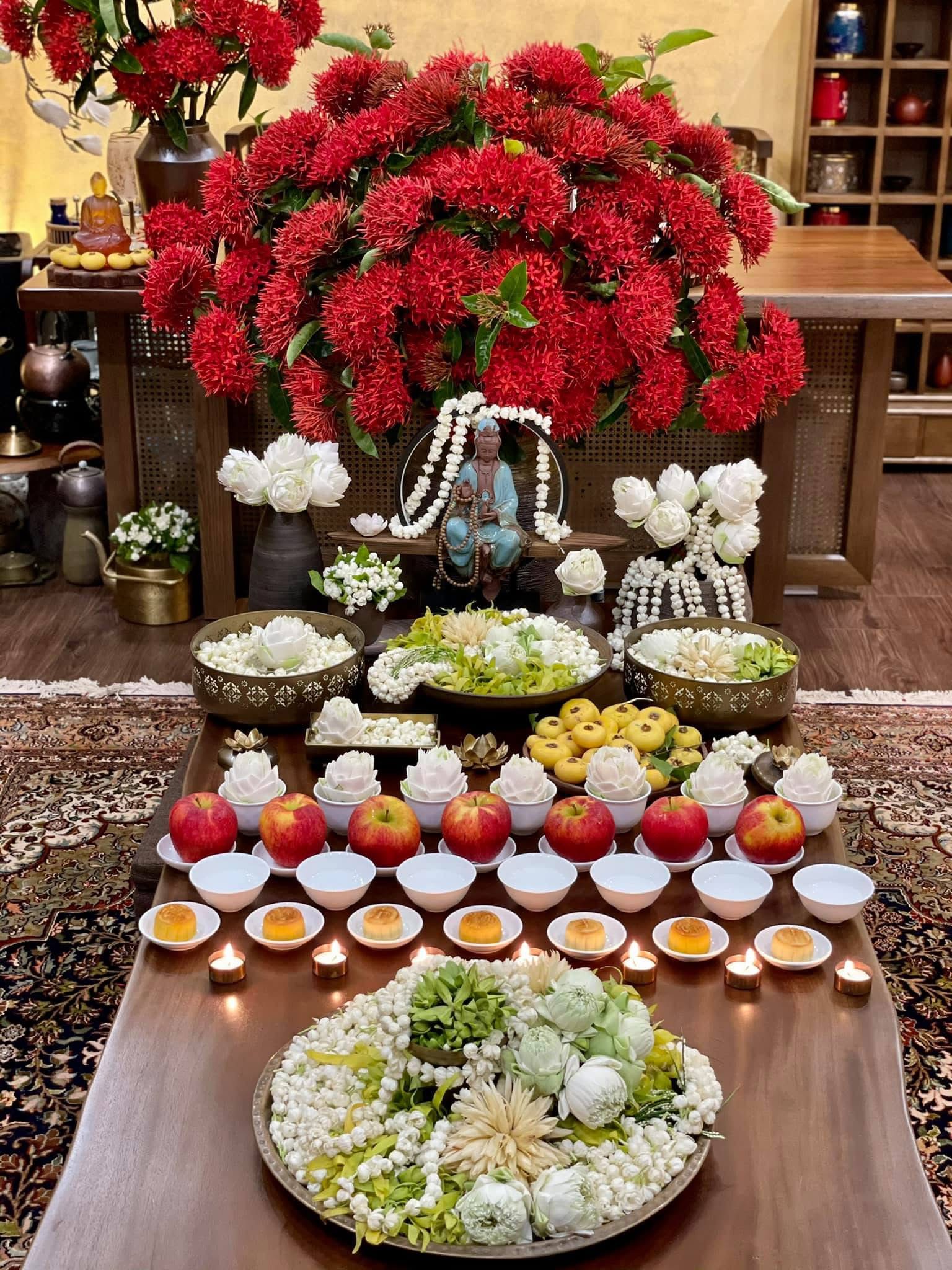
Cleaning the altar before the 1st and 15th is an essential gesture of respect. Each wipe restores purity to the sacred space—inviting clarity, peace, and readiness to connect with ancestors.

Your wishlist is empty.
A tradition practiced quietly but widely, the 1st and 15th days of each lunar month mark important spiritual checkpoints in Vietnamese homes. While not as publicly celebrated as Tết or death anniversaries, these two days carry deep meaning—bringing people back to stillness, intention, and connection with the spirit world. From city apartments to rural villages, this cycle of devotion continues with incense, offerings, and quiet prayer.
Tết marks not just a new calendar year, but a spiritual reset. It is believed that how one begins the year shapes how it unfolds. Offerings to ancestors and deities are prepared with care to invite peace, prosperity, and protection. The altar becomes a bridge—connecting generations, honoring the past, and preparing the path ahead. Families clean the house, settle debts, and wear new clothes to welcome renewal in both body and spirit.
The 1st day (mồng Một) is seen as the opening of a new cycle—an opportunity to let go of past misfortunes and pray for peace, clarity, and success. Meanwhile, the 15th day (Rằm) is when the spiritual realm is believed to be more accessible, making it the ideal time to honor ancestors and cleanse bad energy. This rhythm of new beginnings and deep reflection offers balance to the spiritual life of a household.

Cleaning the altar before the 1st and 15th is an essential gesture of respect. Each wipe restores purity to the sacred space—inviting clarity, peace, and readiness to connect with ancestors.

On both days, families prepare trays of fruit, flowers, rice, tea, or vegetarian dishes. Incense is lit, altars are refreshed, and prayers are offered with sincerity. Simplicity is not frowned upon—what matters most is cleanliness and genuine intent. Even busy families wake early to complete rituals before the start of the day. This consistency is a form of spiritual care passed from one generation to the next.
More than ritual, the act of worship on these days becomes a personal pause. Lighting incense or bowing at the altar reminds individuals of where they come from and what they stand for. It is a soft yet powerful form of presence—a time to reset emotions, express gratitude, and invite harmony into the home.
Younger generations are finding their own ways to continue this tradition. Some keep a small altar on a shelf; others offer just a cup of tea and a flower. The forms may evolve, but the spirit remains. The 1st and 15th are no longer just about religion—they're about identity, mindfulness, and keeping the soul of Vietnamese culture alive in everyday life.